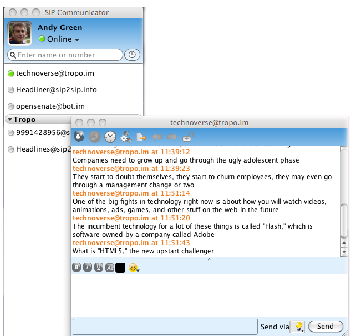Last week, I wrote about the under-appreciated but impressive Phono, a jQuery plugin that lets you embed a softphone into any web page.
Phono is made by Florida-based Voxeo, a long-standing and innovative telephony software vendor.
With a pinch of JavaScript, anybody—developer, HTML-phobic designer—can add a voice channel widget, accessible from laptop, smartphone, or tablet.
What’s cooler than an embedded JavaScript softphone?
Connecting said softphone up with Tropo, Voxeo’s server-side telephony environment.
I usually free associate baseball, not JavaScript, with the month of August, so I decided to take on a small Tropo project to read back current major league baseball scores into my Phono widget, which I’ve conveniently inserted into this post.
Go Yankees!Continue reading


 Another weekend, another hackathon. But the one that was just held in Seatle concerned itself with Gov 2.0 projects. And Technoverse favorite Tropo was there, along with open data service provider Socrata.
Another weekend, another hackathon. But the one that was just held in Seatle concerned itself with Gov 2.0 projects. And Technoverse favorite Tropo was there, along with open data service provider Socrata.



